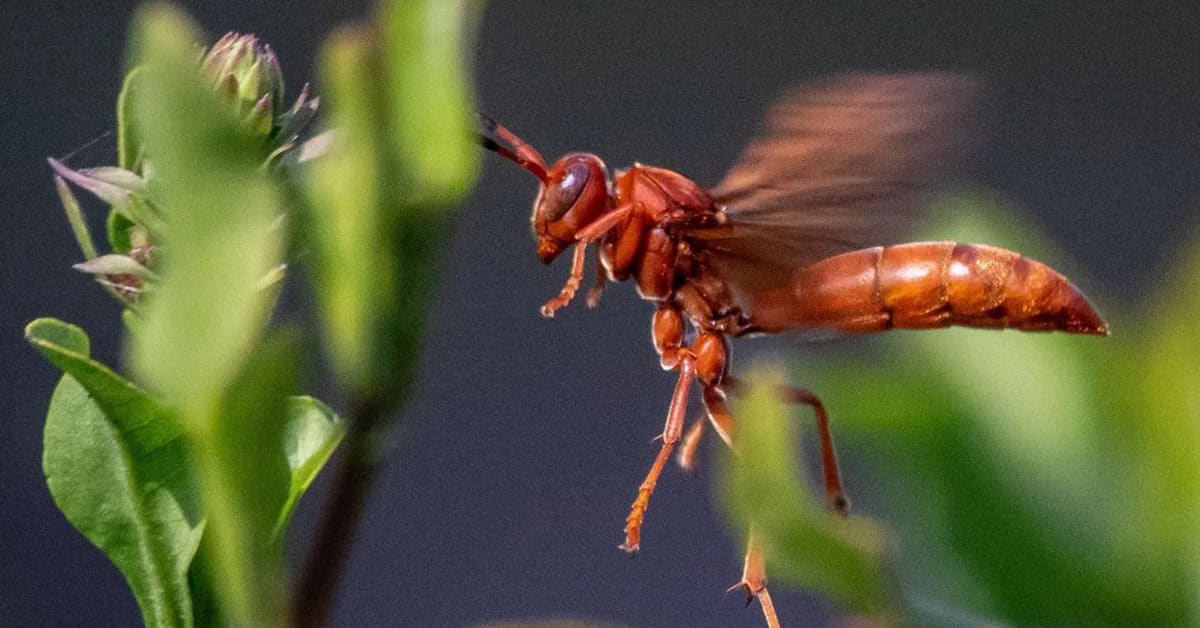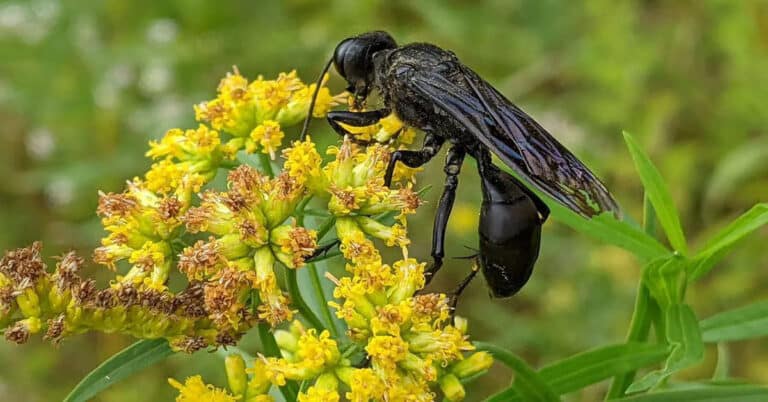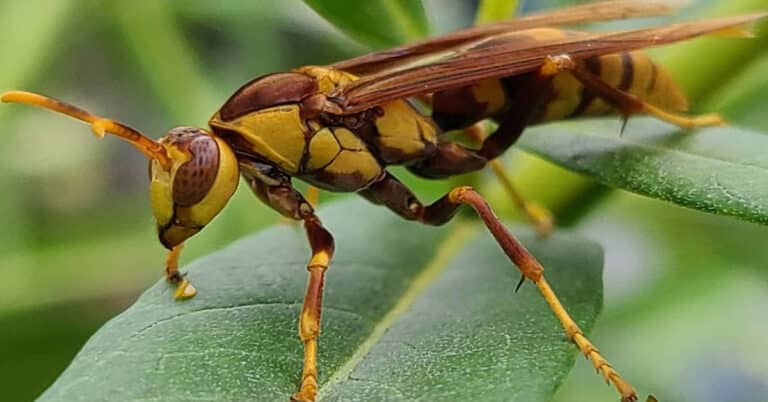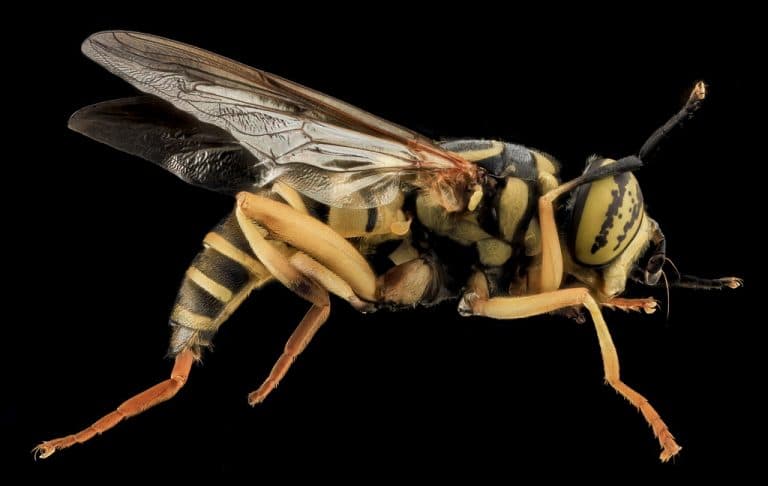Red Wasp Facts
Wasps came into this world roughly 240 million years ago during the mid-Triassic period, and they’ve evolved into over 30,000 different species today. Roughly 4,000 species of which belong to the United States, including the red wasp, with thousands upon thousands still waiting to be discovered across the globe.
Some of the smartest scientists in the world today believe that both bees and ants evolved from wasps 120 million and 140 million years ago respectively during the mid-Cretaceous period.
Fast forward 120 million years and here we are at the beginning of 2023, where insects have never been so dominant. Sure, they used to be bigger, but their diversity has really grown over the years to where there are an estimated 10,000,000,000,000,000,000 in the world right now across 5.5 million species.
On top of that, there’s still an estimated 30 million yet to be discovered.
That brings us to today’s topic, the red paper wasp.
Red Wasp Distribution
Of the 30,000 different wasp species we know of, about 200 of them are classified as paper wasps, with 22 of them being native to the United States. Two of those fall under the red paper wasp category, the Polistes Carolina, and the Polistes Perplexus.
Polistes Carolina red wasps are most commonly found in the eastern United States, but range as far out as Texas and Nebraska, with Polistes Perplexus red wasps also preferring the south-eastern United States.
Red Wasp Identification
It can be quite difficult to tell these two apart, though it is relatively simple to identify red paper wasps as a whole. They have a reddish rust-like color to their bodies and they have black wings.
Some will also have a yellow coloration on their faces, though not all have this genetic trait.
Perhaps the easiest way to identify them is by observing their homes; Polistes Carolina is more commonly found in open areas, usually nesting under eaves and roofs, while Polistes Perplexus generally build their nests in hollow tree trunks.
With red wasps being a social species, their nests can contain upwards of 3,000-to-5,000 individuals at a time.
Red paper wasps grow to about an inch in length at full maturity, whereas a more common species like yellow jackets only grow to about half an inch, ranging from 3/8-to-5/8 of an inch in length.
In contrast, they’re also less aggressive than yellow jackets.
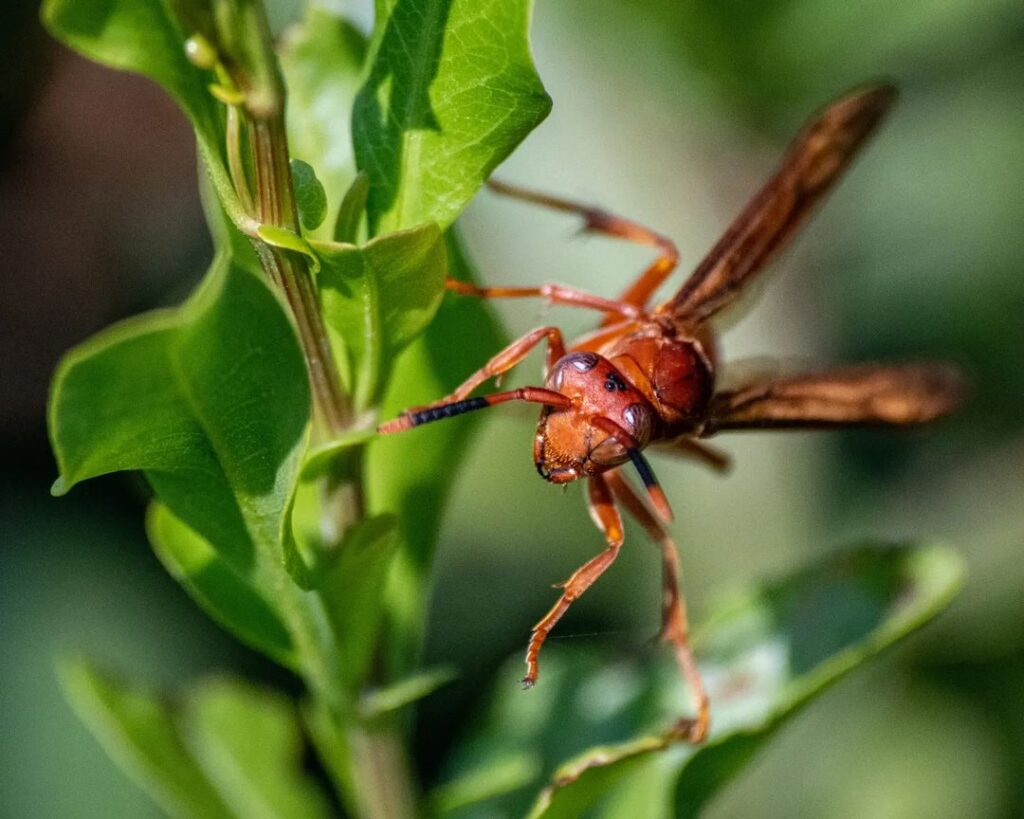
Red Wasp Diet
These wasps are omnivores that feed mostly on nectar, their preferred choice being Goldenrod flowers, but they will also consume caterpillars at times.
Caterpillars are a very common prey for paper wasps, especially their young.
Red Wasp Venom
Though no more potent than the average bee sting, the sting of a red wasp can include symptoms such as pain, swelling, heat, redness, and itching of the area stung, and it can also result in hives if your body has an unfavorable reaction to the sting.
Of course, if you’re allergic to insect stings, it could also result in death.
Luckily for us, wasps will generally leave you alone if you don’t bother or threaten them in any way. But, being a social wasp, they have an entire army to defend their territories if needed.
Considering they can sting multiple times in a single attack, it’s best to stay on the safe side and keep your distance.
Red Wasp Reproduction
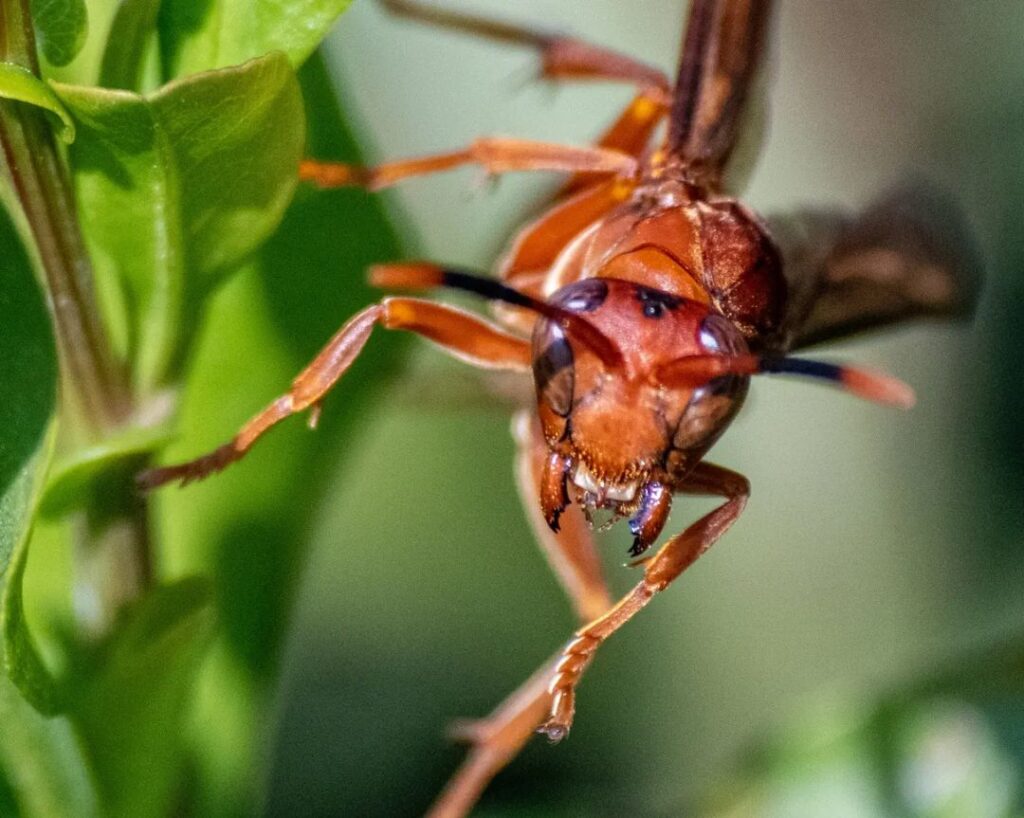
Red paper wasps will lay eggs inside the nest they’ve built, often times laying them as they build it, laying one egg in each cell. They’ll also paralyze prey for their young, leaving it near the nest for their young to consume when they hatch.
This can include a wide variety of insects such as caterpillars, grubs, spiders, and more.
If you enjoyed this piece, perhaps you’ll like this one we’ve recently done on black wasps as well.
And, if you enjoyed this piece, feel free to share it on social media!

I started writing in the fourth quarter of 2018. I wrote solely about MMA and boxing up until October of 2022, where I began writing about animals; primarily dangerous, venomous species. They’ve always fascinated me. Considering, my goal is to make a living by teaching people about these wonderful creatures. You can check out my Facebook page, where every article I’ve ever written currently sits, or you can check out my Twitter page, where I’ve shared all of my animal pieces to date.

